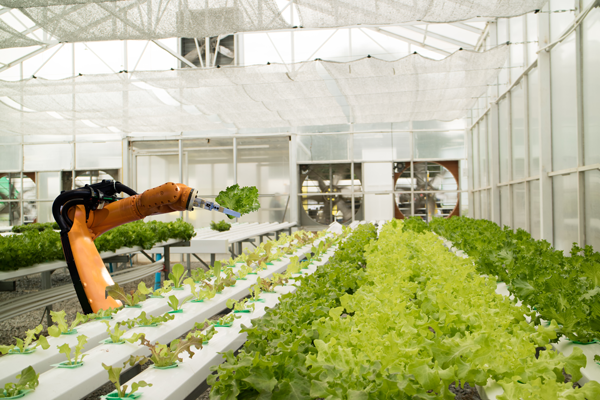British farmers are struggling with a labour shortage and the gap is beginning to be filled by a new generation of robots built specifically for agricultural applications.
These are being created by a wave of robotic startups focused on farming. The Small Robot Company is based in the regional town of Salisbury and has developed three robots called Tom, Dick and Harry, each with different applications.
“The overwhelming feedback from farmers is that farming is not working,” the company says.
“Yields are stagnating, machinery costs are rising, and profit suffering. We are also facing an environmental crisis, with heavy machinery and chemical use playing a key part.”
The company says it is part of the “fourth agricultural revolution” with its approach to what it called “per plant farming,” offered “as a service” similar to most digital solutions in the market.
“To put it simply, your crop will be cared for at a level of detail never previously possible,” the company says.
The three robots work in combination, with the robot called Tom beginning the process through mapping the crop area and collecting data on areas with weeds, or in need of other remedial preparation.
Then along comes Dick, looking like a spider. He electrocutes weeds, and doesn’t use chemicals.
Last is Harry, and his role is to plant individual seeds in precisely drilled holes.
The Small Robot Company is at an early stage, but already it has caught the attention of leading grocery chain Waitrose. At a farm in Hampshire, the team of Tom, Dick and Harry has enabled a 41% reduction in the use of pesticides and a 32% fall in fertilizers. This has been done alongside crop rotation and agronomy on a farm with has a herd of 1000 sheep.
The Small Robot Company is not the only robotic startup shaking up European agriculture.
Danish brothers Kristian and Jens Warming have developed a robot they call the FarmDroid.
The first model was manufactured in 2018 and the design has been improved through various iterations, with FarmDroids now operating in 18 countries with 250 robots carrying out drilling and weeding duties.
Weighing in at only 800 kilograms, which reduces compaction and soil damage, the FarmDroids are solar powered and can operate continually for 24 hours. If the weather is too cloudy, an additional battery can be used which gives up to 12 hours of operation.
Working at a slow pace of under 1 kmh, the FarmDroid covers up to 6 hectares per day. There is no camera system, with guidance coming through an RTK correction system.
This enables them to create an effective geofence, and execute precision weeding which can go within 5 millimeters.
There is also a seeding mechanism, which operates from a seeding map which makes sure the robot knows exactly where to place the seeds after it has created a hole with a small furrow opener.
Another new generation agricultural worker is the robotic dog, named Spot, developed in Boston in the USA by the Manufacturing Technology Centre and Boston Dynamics.
The robot dog analyses fruit crops and inspects for quality, ripeness and disease, and can climb steps and navigate rough terrain which stops other robots.
Spot can carry and power up to 14kg of inspection equipment, and can be operated from afar using an intuitive tablet application and built-in stereo cameras.
The robotic canine can also be integrated with a 360° camera and site documentation software to reduce time required to capture data and enhance employee productivity in documenting and managing site progress.
The current cost is US$75,000, although leasing deals can be had. This is much more expensive than most pedigree dogs, although perhaps not as productive.














